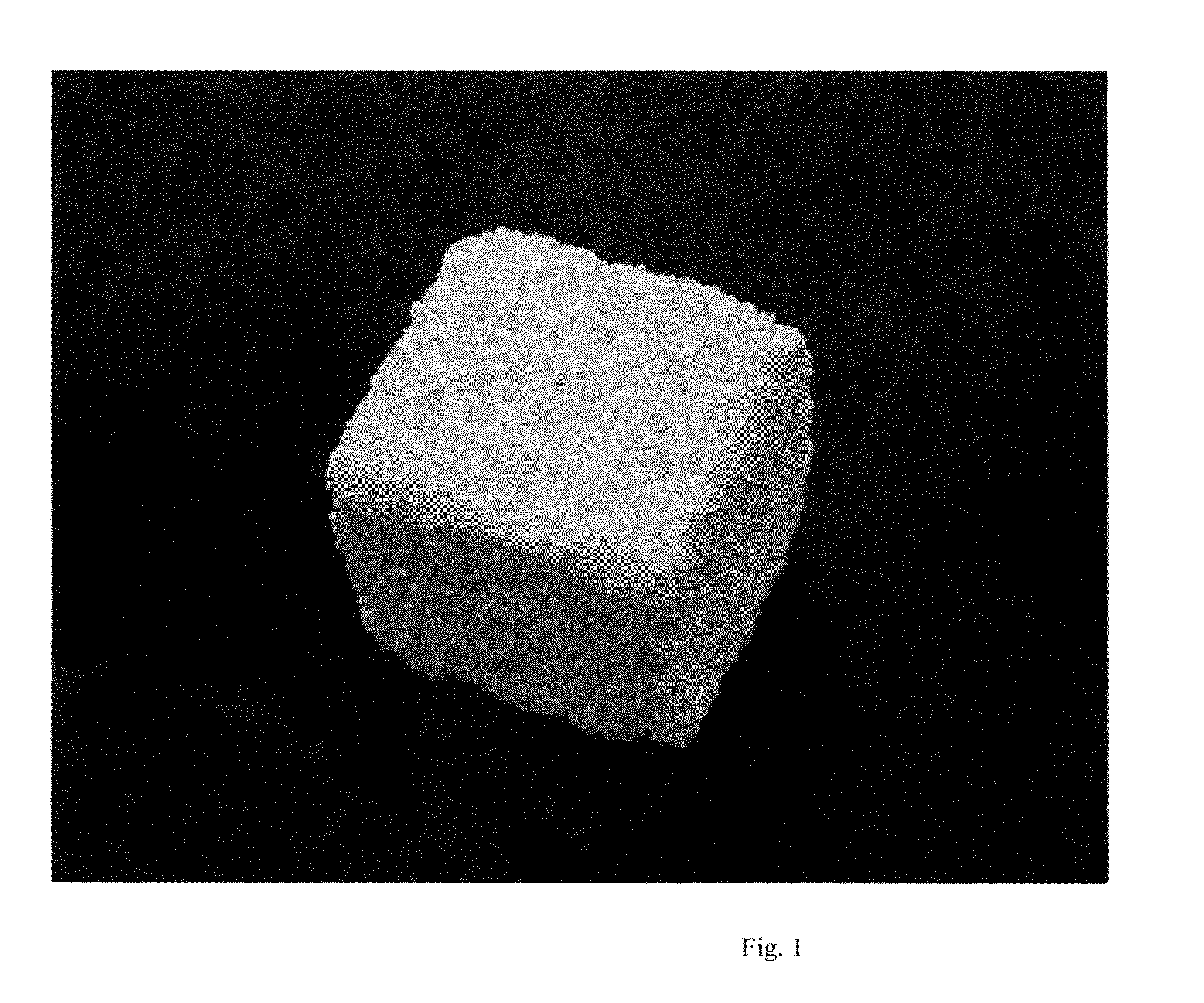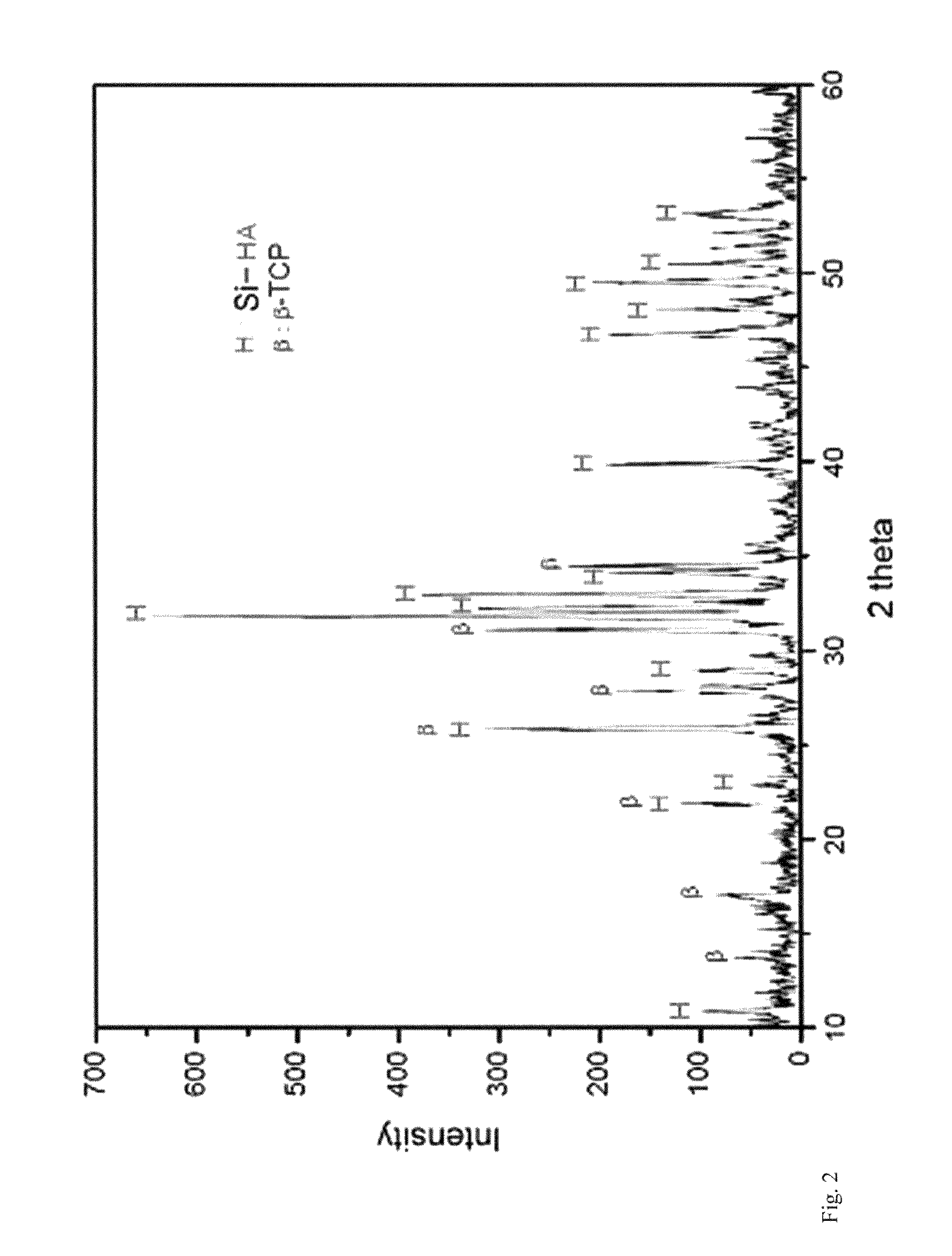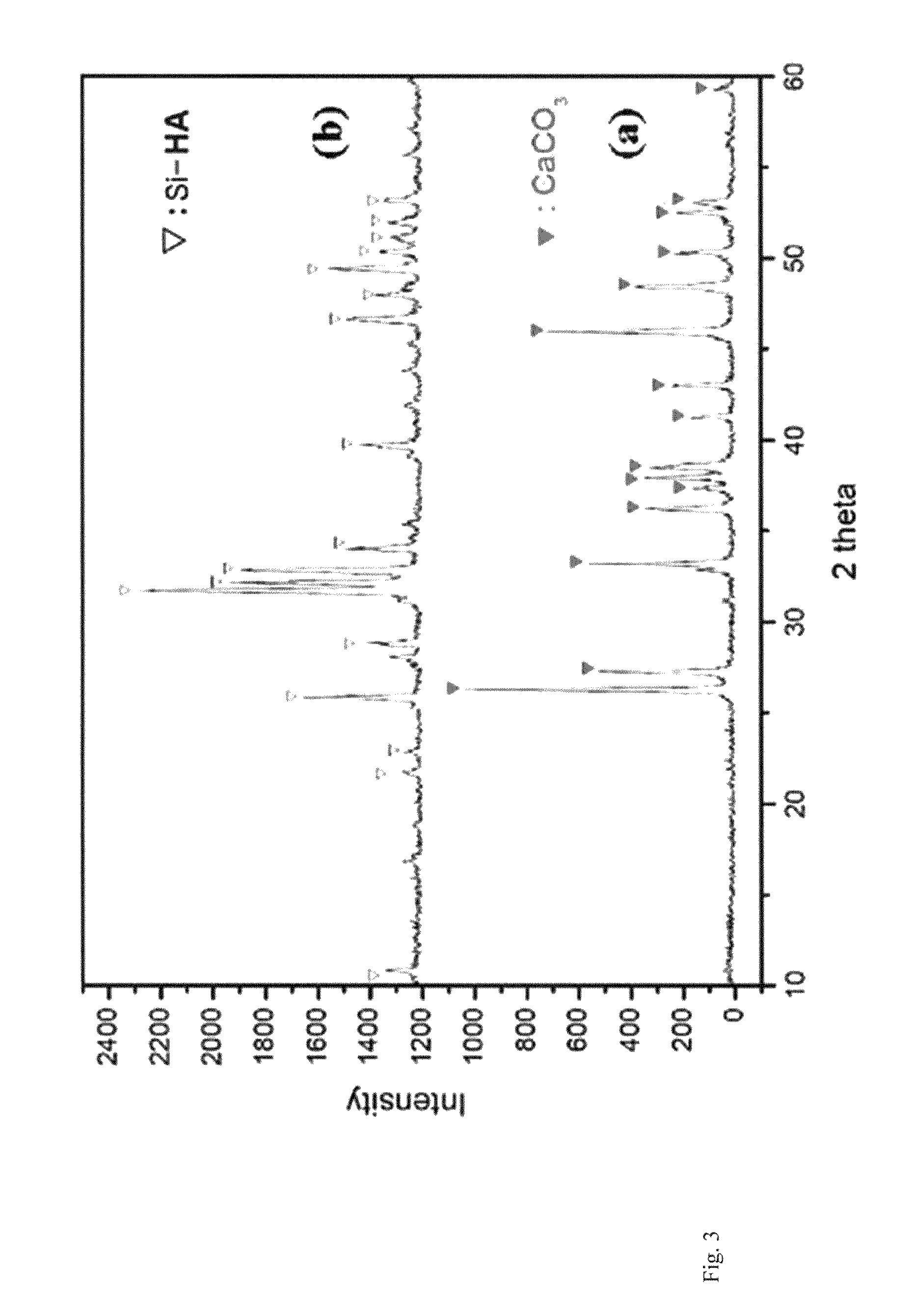Porous composite comprising silicon-substituted hydroxyapatite and ß- tricalcium phosphate, and process for preparing the same
a technology of hydroxyapatite and tricalcium phosphate, which is applied in the field of porous composites comprising silicon-substituted hydroxyapatite and ß-tricalcium phosphate, and a method for preparing the same, can solve the problems of restricting the use of hydroxyapatite for organs, poor mechanical properties of hydroxyapatite, and inability to meet the requirements of hydroxyapatite as a
- Summary
- Abstract
- Description
- Claims
- Application Information
AI Technical Summary
Benefits of technology
Problems solved by technology
Method used
Image
Examples
example 1
Preparation of a Porous Composite Comprising Silicon-Substituted Hydroxyapatite and β-tricalcium phosphate (β-TCP)
[0044]Natural coral having an aragonite crystal phase of CaCO3 as the main component was immersed in 30% sodium hypochlorite (NaOCl) solution and water for 48 hours, and organic matter and impurities were removed from the natural coral using an ultrasonic cleaner.
[0045]500 g of coral and 5 l of 2M (NH4)2HPO4 solution were put into the container (10 l) of a Teflon-coated hydrothermal synthesizer, and subjected to hydrothermal reaction at 200° C. for 20 hours. Then, 500 g of the hydrothermally reacted coral and 5 l of a silicon acetate / acetone saturated solution were put into a container (10 l) of a Teflon-coated hydrothermal synthesizer, and the container was sealed. Thereafter, the resulting mixture was subjected to solvothermal reaction at 70° C. for 40 hours to prepare a silicon-substituted hydroxyapatite porous complex. The prepared silicon-substituted hydroxyapatite ...
example 2
Preparation of a Porous Composite Comprising Silicon-Substituted Hydroxyapatite and β-TCP
[0046]Porous composites were prepared in the same manner as in Example 1, except that the hydrothermal reaction in Example 1 was performed for 16 hours instead of 20 hours.
[0047]A camera was used to photograph the prepared porous composites. The photographed images of the porous composites are shown in FIG. 1.
[0048]XRD data was obtained from the prepared porous composites using a MacScience diffractometer that uses Cu Kα radiation, and the XRD analyses of the porous composites are shown in FIG. 2.
[0049]A phase fraction of the porous composite was calculated from the XRD data. The results are listed in the following Table 1. Also, an inductively coupled plasma spectrometer (ICP) was used to calculate a content of the substituted silicon. The results are listed in the following Table 2.
TABLE 1Phase fractions of porous compositesHeattreatmentFinaltimephase800° C.1000° C.1200° C.Ex. 11 hrSi-HA69.1%7...
experimental example 1
Bone Regeneration Test and Bone Grafting
[0055]In order to determine whether the porous composite according to the present invention could substitute for human hard tissue, bone regeneration tests and bone grafting were performed as follows.
[0056]1. Bone Graft Targets and Experimental Groups
[0057]60 male Sprague Dawley (SD) rats weighing 250 to 300 g were divided into two groups: a 4-week grafted group (30 rats) and an 8-week grafted group (30 rats). For each of the 4-week and 8-week grafted groups, 3 out of 30 rats in each group were allotted to the negative control (None) and the positive control (MBCP bone substitute: HA:β-TCP=60%:40%, Biomatlante), respectively, and 6 rats were allotted to the comparative group, the experimental groups A, B and C, respectively. The grafted materials are listed in the following Table 3. One laboratory animal was bred per cage during the experimental period, and hard food (PicoLab Rodnet Diet 20 (Nutrition™ 20% protein diet formulated for rats)) wa...
PUM
| Property | Measurement | Unit |
|---|---|---|
| diameter | aaaaa | aaaaa |
| diameter | aaaaa | aaaaa |
| thickness | aaaaa | aaaaa |
Abstract
Description
Claims
Application Information
 Login to View More
Login to View More - R&D
- Intellectual Property
- Life Sciences
- Materials
- Tech Scout
- Unparalleled Data Quality
- Higher Quality Content
- 60% Fewer Hallucinations
Browse by: Latest US Patents, China's latest patents, Technical Efficacy Thesaurus, Application Domain, Technology Topic, Popular Technical Reports.
© 2025 PatSnap. All rights reserved.Legal|Privacy policy|Modern Slavery Act Transparency Statement|Sitemap|About US| Contact US: help@patsnap.com



